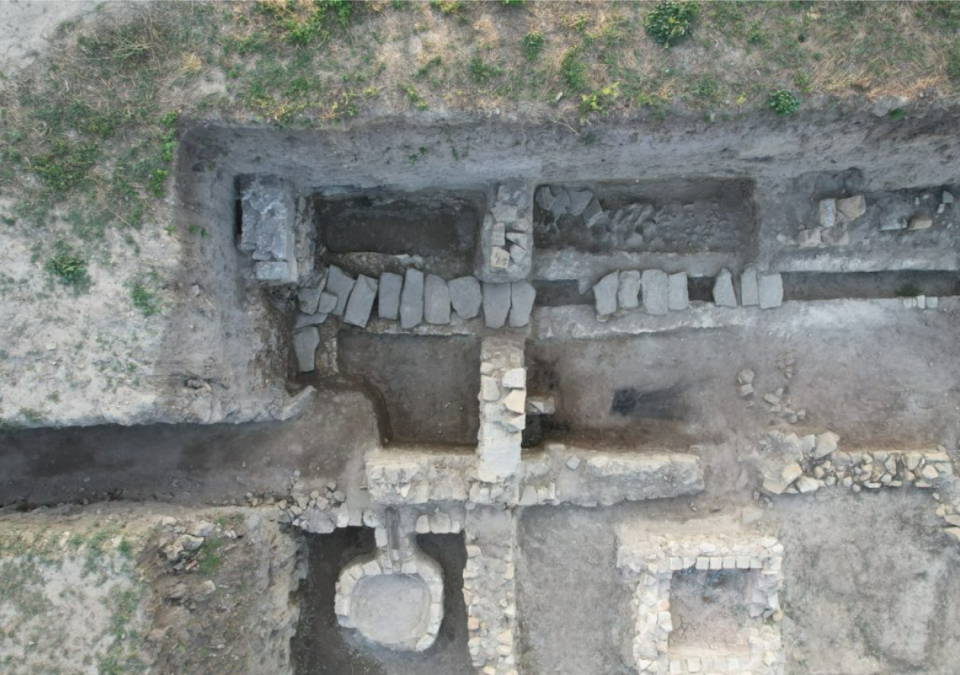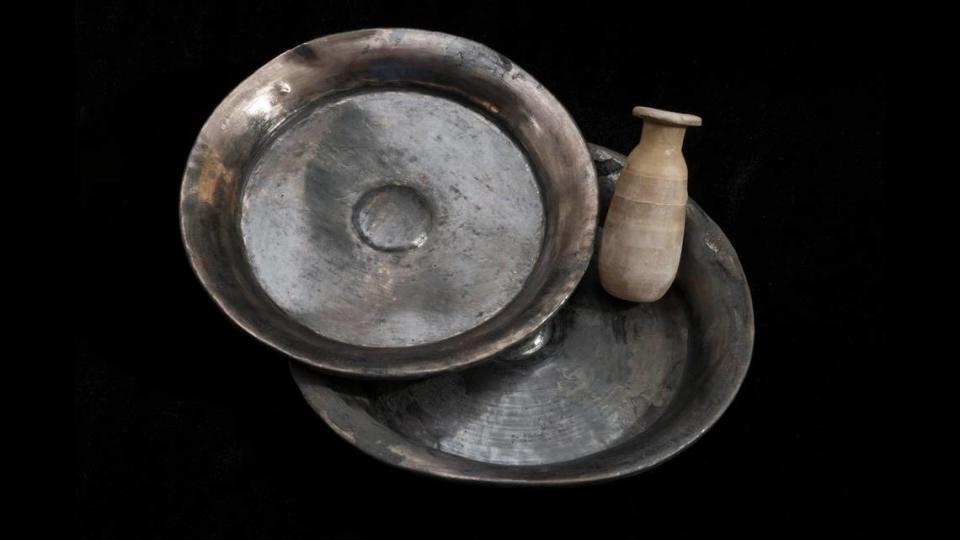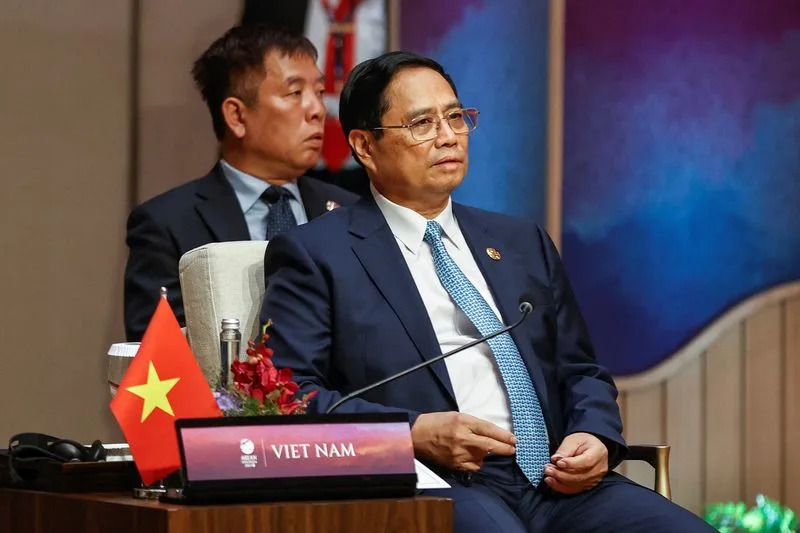Autoworkers used to be the best-paid workers in the U.S. What happened?
Andrew Van Dam and Jeanne Whalen
Fri, September 22, 2023
A General Motors employee in Flint, Mich., in 2006, when American motor vehicle manufacturing jobs paid an inflation-adjusted average of about $44 an hour — over $10 more than today. (Carlos Osorio/Associated Press)
We knew autoworkers used to do pretty well. But we didn't understand just how high their pay had been - and how far they'd fallen - until we ran the numbers.
In the early 1990s, rank-and-file employees in motor vehicle manufacturing averaged $43 an hour in today's dollars, more than any of their private-sector, nonmanagerial peers in 165 other industries for which we have data from the Bureau of Labor Statistics.
But as the current United Auto Workers strike against Detroit's big automakers suggests, things have changed.
In the past year, workers in motor vehicle manufacturing earned about $32.70 an hour on average, or 30 percent less than they did at their 2003 peak, after adjusting for inflation. And that puts them somewhere in the middle of the pack among comparable workers - folks like production employees in manufacturing industries, nonmanagerial workers in service industries and construction workers.
As we dug deeper, we found several reasons for autoworkers' fall. Technology began to replace manufacturing as the nation's profit center. U.S. manufacturing jobs began to shift to nonunionized factories in the South. And the UAW made big pay concessions around the time of the Great Recession in 2008, when Detroit's Big Three automakers - General Motors, Ford and Chrysler, now part of Stellantis - were fighting to survive.
But while we'll address those soon enough, we started our search with the crux of workers' complaints: Many of them feel worse off than their parents and older relatives who worked in the industry.
Vincent Tooles, who assembles Jeep Wagoneers for Stellantis in Warren, Mich., said his father was making $32 an hour working for Chrysler in 2002, after 34 years of service. Tooles makes $20.60 after three years on the job.
"I feel like we're the only industry probably in the country that has [gone] down in pay over the last 30 years," he told us after a recent UAW rally near his factory.
While autoworkers weren't the only rank-and-file employees to see their pay drop in the past three decades, after adjusting for inflation, they were hit especially hard. In fact, they've seen their paychecks plunge further from 1993 to 2023 than any other of the 166 industries we tracked.
The Bureau of Labor Statistics (BLS) pay data we're using here represents a broader group of motor-vehicle workers than just UAW members, who are concentrated in Big Three factories. It includes all workers - unionized and nonunionized - who play a hands-on role in producing complete light-duty vehicles and heavy-duty trucks. That means assembly line and metal fabrication workers, warehouse workers and those who handle and process materials.
It also includes supervisors who may be in charge of others but whose real focus is still production. Think warehouse or assembly-line supervisors, not accountants or Felicia from finance.
The data also includes compensation beyond the hourly pay rate, including some incentives and the impressive amount of overtime pay earned by autoworkers - an average of more than seven hours a week this year, according to BLS. That helps explain why the average pay can be above the hourly wage range for UAW workers at the Big Three, which is currently about $18 to $32 an hour for full-timers, and roughly $16 to $19 for temporary workers.
An important caveat: The BLS data we're using does not include bonuses such as the profit-sharing and quality-linked payments that UAW full-timers receive, typically once a year. Ford says those bonuses totaled $42,000 per worker over the past four years for its eligible UAW workforce. Temps don't get them.
Detroit automakers have increasingly shifted to offering UAW workers this kind of contingent compensation that is doled out when times are good but easier to cut than wages are when times are bad. If these bonuses were included in the BLS data, autoworker earnings would look better.
As we dug into the data and called around, it became clear there was no single culprit for the earnings drop - several big shifts brought autoworkers to this point.
Perhaps most obviously, the U.S. economy advanced beyond manufacturing. Around 1997, as the internet bubble inflated, software industry jobs surged past autoworkers to take the top spot for nonmanagerial pay, followed by computer systems design jobs and other tech work, though motor vehicle workers remained in the top five at around $44 an hour, adjusted for inflation.
But in the 2000s, their earnings started falling, after adjusting for inflation. The industry has plummeted to around 40th place in the rankings, behind industries such as commercial and road construction work, mining and office administration.
In 1994, the average rank-and-file worker in the private sector earned about half what autoworkers made. In the past year, the average nonmanagerial, private-sector worker made about $28.70 an hour, or 88 percent of what an autoworker gets.
To further explain the decline, we called labor data legend Erica Groshen, who was BLS commissioner from 2013 to 2017 and is now a senior economics adviser at Cornell University's School of Industrial and Labor Relations.
Groshen pointed to geography, explaining that when automakers have erected new American factories in recent decades, "they have built their facilities in states where it is difficult to unionize."
And sure enough, when we ran the numbers we saw a clear shift in manufacturing from the union-heavy Rust Belt to the right-to-work Sun Belt.
In the late 1980s, about 4 in 5 autoworkers lived in the Midwest, according to our analysis of our beloved BLS Quarterly Census of Employment and Wages. But the South's auto industry gained ground in the 1990s and 2000s. And somewhere around 2018, we hit an inflection point. The Midwest was no longer home to most U.S. autoworkers.
Today the South hosts almost as many autoworkers as the Midwest, and it stands to get another boost as Tesla ramps up production in Texas. And the West continues to gain ground; California recently became the second-biggest state for autoworkers, parallel to the rise of nonunionized Tesla.
But the pay drag isn't just coming from this geographic shift. Michigan was consistently among the top-paying states for autoworkers, but autoworkers' weekly earnings there began falling around 2013, even before accounting for inflation.
One big factor in the pay plunge is the concessions the UAW made to the Big Three in their 2007 contract, when the three heavyweights teetered on the brink. Anyone hired after that contract went into effect became part of a "second tier" of full-time workers with lower wages and benefits. They also lost defined-benefit pensions, getting 401(k) accounts with a company contribution of 6.4 percent of workers' wages instead.
In 2009, after the economic crash, the companies were fighting for their survival. GM and Chrysler required federal bailouts to stay in business. As it helped restructure the companies, the government required the union to make further concessions, including giving up regular cost-of-living adjustments to wages. In addition, older workers were offered buyouts and early retirement packages to make room for younger, cheaper workers, according to Kristin Dziczek, an auto expert at the Federal Reserve Bank of Chicago.
"A condition of the government assistance to Chrysler and GM was that they become 'cost-competitive' with the international automakers that also produced light vehicles in the United States," Dziczek recalls. "An additional provision mandated by the government was that the UAW could not strike until 2015."
Now that they are free to strike again, and emboldened by a tight labor market, the union is determined to claw back those concessions.



























